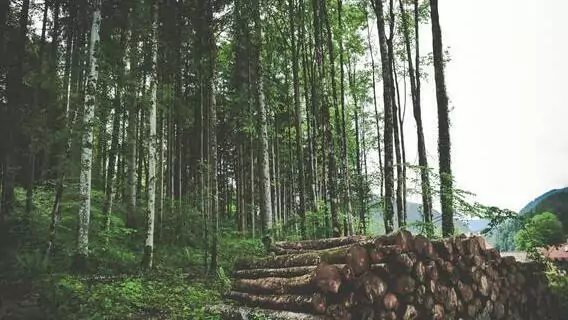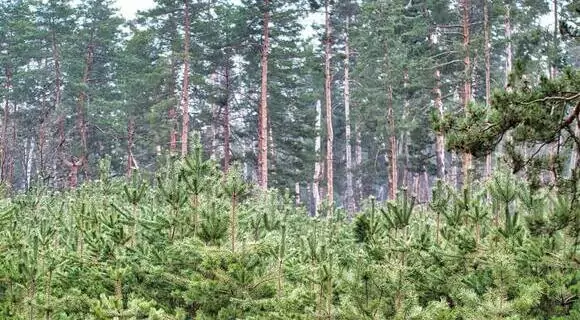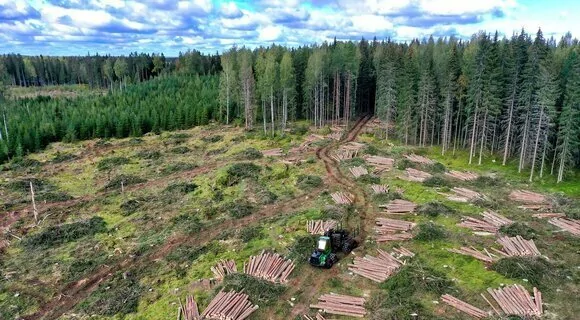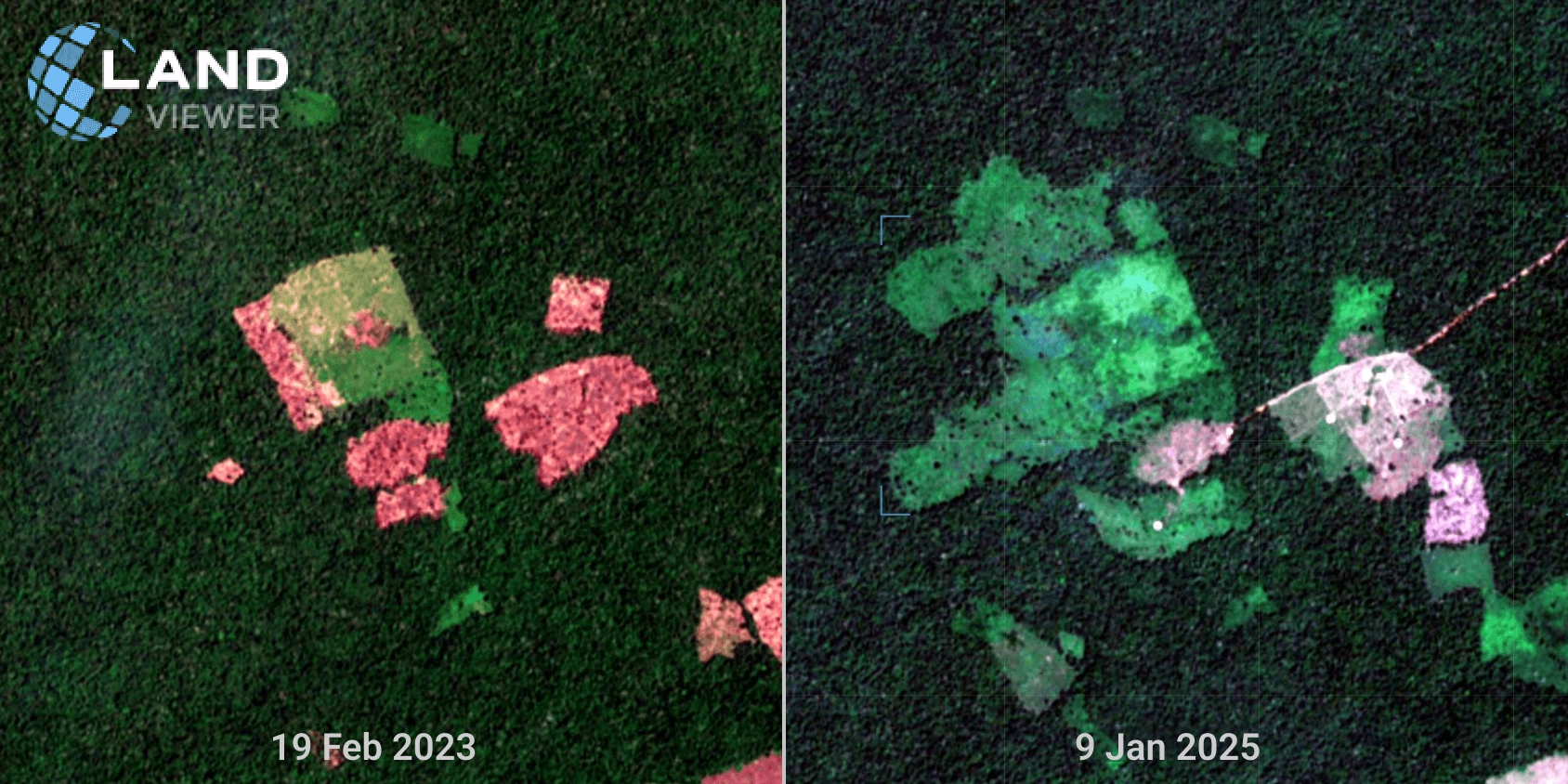
Clear-Cutting Pros & Cons And Its Effects On Forests
Clear-cutting is a disputable forestry technique. Effects of clear-cutting on soil and nature can be adverse. However, there are certain benefits as well. Forestry clear-cutting is often regarded as a synonym for deforestation, yet it is not always the same. The practice can lead to land degradation in the most severe cases, but it can be beneficial for forest regeneration, which is among the most important advantages of clear-cutting. So, when used correctly, it does bring some positive effects to bear in mind.
What Is Clear-Cutting?
Clear-cuts are forest-felling when all or most of the trees are removed in the selected area at the same time. The method is the most commercially attractive and thus the most typical one. Commonly, trees are cut uniformly. However, there are other options as well.
Reasons For Clear-Cutting
Clear-cuts are done for several purposes, which include timber harvesting or forest regeneration as part of a reforestation plan. Removal of old trees is beneficial for forest health because they are less immune to pathogens and diseases. Besides, clear-cuts allow more sunlight for younger trees that do not tolerate shade. As a result, saplings grow in even-aged stands.

Types Of Clear-Cutting In Forests
There are several clear-cutting practices that differ by choice of trees to fell and the cut area.
- Standard (uniform) – logging all the trees in the area, irrelevant of their commercial value.
- Patch – felling in a certain area (patches).
- Strip – cutting trees in rows usually at the right angle to prevailing winds.
- With reserves – leaving some trees for different purposes, e.g., as shelters for wildlife.
- Selection cutting (ecoforestry) – removing selected trees for different purposes (harvesting, ecological, forest health, etc.). Commercial logging usually implies the removal of the most expensive timber.
- Slash-and-burn – cutting and burning forests with further use for agriculture or construction. Sometimes, the method also implies selling commercial timber, then burning the remaining stems and converting the land to farming.
Clear-Cutting Advantages And Disadvantages
The practice has its pros and cons, depending on when it is used. It is not the only option for merchantable timber logging, yet advantages of clear-cutting make it the most typical way. Nonetheless, negative effects of clear-cutting should not be underestimated, too.
Cons Of Clear-Cutting
- Destroys forest ecosystems, depriving wildlife of natural habitats and decreasing biodiversity. Still, fauna can return to the area when the forest is renewed.
- Increases the risks of soil erosion. Trees slow down water currents, preventing rill formation, this is why clear-cutting increases erosion.
- Leads to sedimentation and nutrient leakage to water bodies.
- Interferes with the water cycle as trees consume and release moisture in the process of evapotranspiration.
- Raises water temperature in the riparian zones due to a lack of shade, which adversely affects the aquatic animals.
- Worsens the air quality. Trees enrich the atmosphere with oxygen and take carbon dioxide. Clear-cutting reduces this forest property.
- Removes carbon sinks. Trees and forest soils accumulate carbon . When forests are cut, carbon is released, adding to global warming and climate change.
- Spoils the scenery. Bare patches in forest landscapes look empty and are in no way appealing to the eye.
- Provokes slides. Tree roots hold the soil in place. After clear-cutting, the earth becomes loose, which often leads to sliding.
- May cause deforestation. Permanent forest cuts without regeneration may result in forest losses, land devastation, forest fragmentation and desertification.
Clear-cutting may cause water levels in neighboring currents during the first five to ten years until the saplings start to participate in the water cycle. However, the forest soil has better soil absorption qualities even after deforestation, compared to fields.

Pros Of Clear-Cutting
- gives sunlight to younger trees;
- improves forest health;
- regenerates species that do not tolerate shade, improves seeding and sprouting;
- supplies timber for multiple purposes;
- decreases forest soil disturbance with logging machinery as the trees are cut at once;
- mitigate the risks of wind damage to shallow-rooted trees;
- provides employment and brings profit to foresters.
Difference Between Clear-Cutting And Deforestation
Clear-cutting is often mistaken for deforestation. Yet, clear-cutting and deforestation are two different terms. Clear-cutting can be regarded as deforestation only when forests are logged for agricultural use, with possible desertification as the most serious land degradation outcome. However, clear-cuts are done with further forest regeneration in most cases, so it is not deforestation. Clear-cutting stimulates offspring formation and is beneficial for forest health, as stronger saplings eventually replace weaker ones.
Deforestation rates differ globally. For example, the forest lands in North Carolina are mostly private. The forest areas remain rather stable there and occupy nearly 60% of the state, as estimated in 2002-2016. Nonetheless, deforestation is still a severe method of land expansion for commercial purposes in many countries.

How Long Does It Take A Forest To Recover From Clear-Cutting?
Forest regeneration takes around thirty years on average. New saplings typically appear after five years after clear-cuts and grow about ten feet tall by the age of fifteen. Their height reaches twenty to thirty feet at the age of thirty. After clear-cutting, the number of trees increases: nearly a hundred mature trees are replaced with 300-500 off-springs. With time, their density is reduced due to species competition.
However, for the full recovery (particularly of rainforests), much more time is needed. Tropical rainforests may regenerate up to sixty-five years, and animals play a key role in spreading the seeds over the area (nearly 80%) .
It is wrong to consider that clear-cuts always mean forest destruction, and trees won’t grow more. Benefits of clear-cutting make it a useful forest generation practice on the condition of thoughtful reforestation planning. It is optimal when foresters choose appropriate methods for tree recovery, which can be performed with seeds, seedlings, or sprouts. Tree trunks and branches may also give rise to off-springs after cuts.
Clear-Cutting With EOSDA LandViewer
Among different methods of forest management for commercial harvesting, clear-cuts can be precisely detected with remote sensing. It enables foresters to monitor clear-cutting areas and compare their planned and actual size after the procedure. EOSDA LandViewer platform helps detect illegal logging, fire hazard zones, and the general forest state. In particular, the NDVI index allows understanding how healthy the forest is and how well selected AOIs re-grow after clear-cutting.
The following area of interest (AOI) in Colombia’s tropical forest has been experiencing logging since the beginning of 2023 and continues to this day. A comparison of two satellite images shows a decrease in forest cover and clearly outlines the affected territory. The deforested areas are primarily being converted for agricultural purposes.

We Are Here To Help
Due to adverse clear-cutting effects, the method is not always the best option and is not a part of sustainable forest management. Still, it is one of the most often used and effective forest management and regeneration techniques when negative effects of clear-cutting are mitigated.
The choice is always up to you. In any case, EOSDA can help manage this process more efficiently with EOSDA LandViewer. If you have any questions, please, contact our sales department at sales@eosda.com, and our experts will give you a detailed answer.
About the author:
Kateryna Sergieieva has a Ph.D. in information technologies and 15 years of experience in remote sensing. She is a Senior Scientist at EOSDA responsible for developing technologies for satellite monitoring and surface feature change detection. Kateryna is an author of over 60 scientific publications.
Recent articles

Analyze 2025 & Plan Your Best Year Yet: LandViewer Christmas Offer
It’s the most wonderful time of the year! The Christmas holidays are here, and so is your chance to analyze 2025 and plan a prosperous 2026 with more affordable Pro plans in LandViewer.

EOSDA Models Climate Change Impact On Sugarcane Yields
EOSDA modeled future temperature, rainfall, and other climate impacts on Veracruz sugarcane. The results help growers plan long-term adaptation strategies, including timing, varieties, and irrigation.

EOSDA LandViewer Black Friday Sale: Exclusive Offers & Giveaway
This Black Friday, LandViewer offers new users the chance to save on monthly plans, get extra months with yearly subscriptions, and participate in a free annual plan giveaway.

